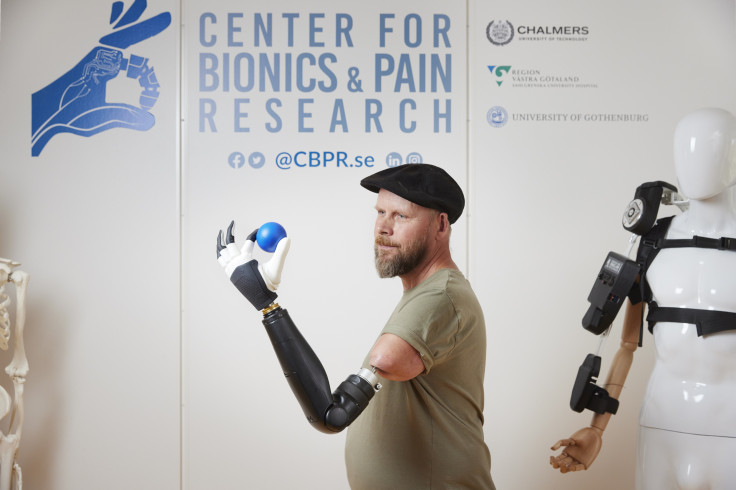Prosthetic Breakthrough Allows Man With Amputated Arm Move Every Finger Of His Bionic Hand

In a prosthetic breakthrough, a man who lost an arm above the elbow has become the world's first amputee to freely control all five fingers of his bionic hand, thanks to new surgical and engineering innovations by researchers in Sweden.
A bionic hand is an electromechanical device attached to the body of an amputee that replicates the functionality of a natural arm or hand. The robotic device is usually connected to the remnant muscles in the residual limb so that the electrical activity generated by the contractions allows the amputee to control the movements at their will.
However, in people with higher amputation levels, such as above the elbow, not many muscles remain to send the signals to the robotic joint.
A group of researchers from the Centre for Bionics and Pain Research in Sweden, led by Professor Max Ortiz Catalan, has now found a solution to the problem. The team found that as signals in remnant muscles are too weak, splitting the nerves severed through amputation and rerouting them to new muscle targets can enable a patient to have better control.
"A multidisciplinary team of surgeons and engineers has circumvented this problem by reconfiguring the residual limb and integrating sensors and a skeletal implant to connect with a prosthesis electrically and mechanically," the researchers said in a press release.
The residual limb of an amputee from Sweden, identified by his first name Tonney, was reconfigured based on this surgical innovation. The 54-year-old man can now perform everyday tasks. Researchers claim that the new development allows people with arm amputation to control each finger of a bionic hand, exactly as if it were their own.
"We manage to extract an unprecedented amount of motor neural information by surgically creating electro-neuromuscular structures in the residual limb, which are then interfaced with the prosthesis using a neuromusculoskeletal interface (connection to nerves, muscles and skeleton). We then use AI algorithms to decode the intention of movement using all the available neural information," Catalan told Medical Daily.
It is estimated that more than 2.1 million people in the U.S. live with limb loss and the number is expected to double by 2050. The researchers believe the breakthrough innovation offers new hope and possibilities for people with amputations worldwide.
"The surgical and engineering developments we present in this study bring an unprecedented level of control over bionic prosthesis. It's the combination of surgical and engineering approaches that the patient can use in his daily life," Catalan said.
The professor believes the seamless integration between man and machine is the future of bionics. "We use bionics to restore impaired function and this is our focus. We have achieved this by creating ever higher integration between man and machine. This seems to be the future of bionics, more intimate and functional integration between the person and the assistive device," Catalan added.



























